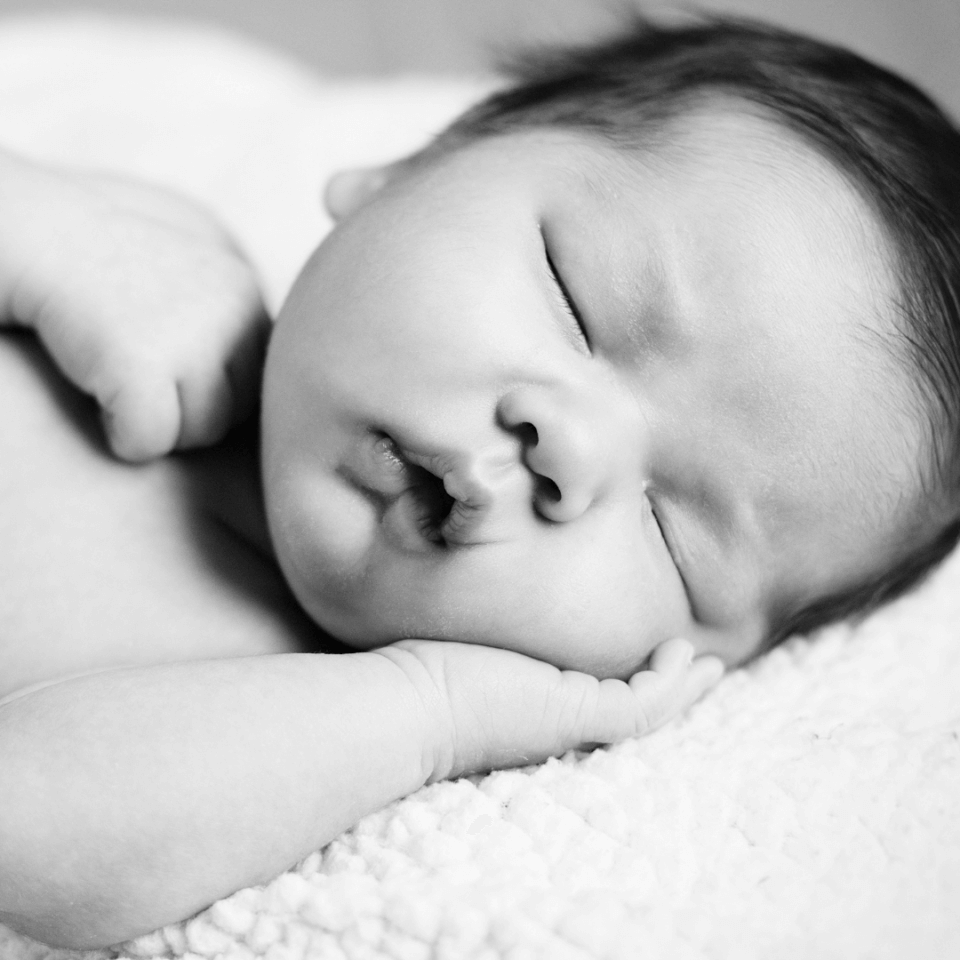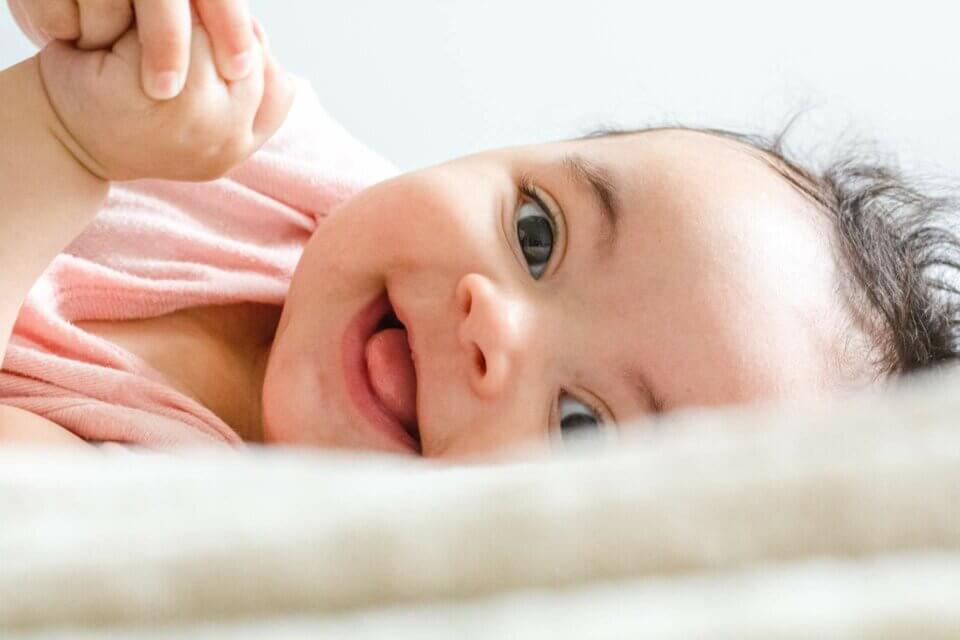Kids & Company Blog
A New Year, A New Sleep Routine: Tips for Healthy Sleep Habits
Watching your child sleep is often a moment of immense gratitude. Looking at their peaceful face and listening to their slow breathing reminds you of why you love being a parent. It may also have something to do with the fact you can take a breath from the chaos that occurs when they’re awake. For the worn-out parent, seeing your little one hit snooze for 12 hours can make you a wee bit jealous. However, don’t be fooled, their bodies and minds are still working full steam ahead. Their brain’s neural pathways are getting stronger, their bodies are growing, and they are developing strong immunity simultaneously.
There’s no doubt the benefits of getting enough sleep for both children and parents are endless. Sleep is vital to our overall well-being, so let me share some healthy sleep habits you can put in place so your child can grow, be happy, and stay well-rested, allowing you to get the zzz’s you deserve too. A well thought out sleep environment, predictable routines, and consistency are the foundations of great sleep.

Sleep Environment
A cool, calm sleep space is an important piece of the puzzle when it comes to getting a good night’s sleep. You will want to consider the room temperature, blackout curtains, sleepwear, and a sound machine when setting up an effective sleep environment.
Light’s Out
- A dark sleep space is key to heightening melatonin levels, which helps us to sleep.
- Installing black out curtains will help to achieve a sleep environment that is cool and very dark. Pitch black is the goal – you don’t want any peaks of light coming through.
- Light can contribute to early wakes and difficulty falling and staying asleep.
Sleep in (Appropriate) Style
- Use age/temperature appropriate sleepwear.
- A swaddle (until the baby can roll over, then discontinue) or sleep sack is a great sleep association that can be used during naps and nighttime sleep.
- Sleep sacks can help to regulate body temperature while sleeping.
- Swaddles and sleep sacks provide a sense of security and eliminate the need for extra bedding in the crib. Safety first!
Keep Sounds in Check
- A sound (or noise) machine effectively masks shifts in environmental or outside noises that can disturb sleep.
- The sounds of white noise or rain running continuously will help lull and keep your child asleep.

Bedtime Routine
Bedtime routines set your child up for sleep success. Creating consistent routines gives children of all ages a sense of security and predictability. Children who participate in the same bedtime routine each night are less likely to resist bedtime, fall asleep quicker, sleep longer, and wake up less during the night.
An example of a bedtime routine could look like this:
- Bath (every night, if possible) We encourage a bath each night to relax the body and lower the core temperature.
- Diaper/toileting
- Pajamas
- Read books and/or sing songs
- Place your child in crib/bed awake and alone
- Sound machine on (white noise or rain)
- Lights out
On days when naps have been poor, opt for an early bedtime. You can put your child to bed as early as 6:00 pm. Anything earlier could result in early morning wakes.
Age-Appropriate Sleep Times
I am sure you have witnessed the effects of an overtired child. They can often become inconsolable and difficult to reason with. To prevent overtired behaviours, you will want to ensure that your little one is in bed at the correct time frame for their age. Typically, bedtime is around 7:00-7:30 pm for children up to age 5. You can check out an awake time cheat sheet in my highlights @weesleep_alana. Following wake windows for your child will prevent them from becoming overtired, having night wakes, and early morning rising (between 4-6 am).
Independent Sleep Habits
We can teach our children independent sleep habits as early as the newborn phase. This includes putting your little one in the bassinet or crib completely awake. We want them to be aware of their surroundings so that when they do wake from sleep cycles there are no surprises to the environment they are currently in.
Sleep props such as pacifiers, rocking, bouncing, holding, and feeding to sleep are commonly used to get children to sleep. These sleep props can become problematic when little ones experience challenges trying to connect their sleep cycles; essentially requiring you to get them back to sleep each time they wake. Using a wake, eat, play routine will help you move away from feeding to sleep. Feed your babe when they wake versus before sleep times.

Consistency is Key!
The magic happens when you are consistent. Teaching our children new skills takes time, patience, persistence, and consistency. You can do hard things! Consistency allows our children to adapt, and learn to use their new-found sleep skills.
If you feel like you have tried all of the above and are still struggling with a child who isn’t sleeping – Alana Metllo can help with that too! Sleep coaching with an expert like Alana might be the answer you’ve been looking for. At WeeSleep, our approaches are gentle, supportive, and guided. You can get the process started by booking a free 15-minute call, here.
As a Kidco family, you can get the process started by using the promo code WEEKIDCO to receive 15% off of our one-to-one Rescue Me and Toddler Time coaching packages. We’re here to improve your child’s sleep health while supporting your family with the sleep they deserve. Visit us at www.wee-sleep.com to learn more about our sleep packages.
Learn more about Alana Metallo, Certified Wee-Sleep Consultant, by clicking here.
Posted on: Friday January 13th, 2023
Posted by: Kids & Company
Calgary
Calgary
Calgary
Calgary
Calgary
Edmonton
Cochrane
Red Deer
Calgary
Calgary
Okotoks
Calgary
Calgary
Calgary
Calgary
Edmonton
St. Albert
Edmonton
Edmonton
Edmonton
Edmonton
Edmonton
Edmonton
Edmonton
St. Albert
Edmonton
Edmonton
Sylvan Lake
Edmonton
Sherwood Park
Edmonton
Calgary
Edmonton
Calgary
Edmonton
Kamloops
Langley
Langley
New Westminster
North Vancouver
Richmond
Vancouver
Victoria
Victoria
Port Moody
Surrey
Surrey
Surrey
North Vancouver
Nanaimo
Surrey
Coquitlam
Burnaby
Port Coquitlam
Vancouver
Maple Ridge
Maple Ridge
Maple Ridge
Mission
Maple Ridge
Maple Ridge
Maple Ridge
Maple Ridge
Mission
Mission
Maple Ridge
Maple Ridge
Chicago
Chicago
Chicago
Chicago
Schaumburg
Chicago
Winnipeg
Abington
Canton
Quincy
West Quincy
Braintree
Braintree
Walpole
East Walpole
Brighton
Brookline
Jamaica Plain
Jamaica Plain
Cambridge
Needham
Newton Highlands
Newton
Cambridge
Boston
Randolph
Kingston
St. Peters
Lake St. Louis
Troy
O'Fallon
St. Charles
Lake St. Louis
St. Peters
O'Fallon
Howell Township
Freehold Township
Manalapan Township
Stratford
Marlton
West Deptford
Bedford
Dartmouth
Halifax
Bedford
Hammonds Plains
Lower Sackville
Eastern Passage
Avon Lake
Beachwood
Hudson
Medina
Strongsville
Cleveland
Westlake
Aurora
Burlington
Burlington
Etobicoke
Etobicoke
Hamilton
London
Milton
Mississauga
Ottawa
Richmond Hill - Corporate office (No child care services)
Toronto
Toronto
Toronto
Toronto
Toronto
Waterloo
Kanata
Oakville
Oakville
Toronto
Whitby
Toronto
Mississauga
Ottawa
Toronto
Toronto
Toronto
Brampton
Stoney Creek
Toronto
Nepean
Burlington
Burlington
Oakville
Waterdown
Oakville
Pittston
Wilkes-Barre
Exeter
Old Forge
Dover
Harrisburg
Harrisburg
Harrisburg
Hummelstown
Palmyra
York
York
York
Sweet Kiddles Avon Lake, part of the Kids & Company Family
Abington
Aurora
Sweet Kiddles Beachwood, part of the Kids & Company Family
Bedford (Dellridge Lane)
Larry Uteck (Southgate Dr)
Pine Village South End, by Kids & Company
Braintree 1
Braintree 2
Brampton
Pine Village Brighton, by Kids & Company
Pine Village Brookline, by Kids & Company
Burlington Children’s Centre
Burloak
Appleby
Beacon Hill
Brightstart Burnaby, by Kids & Company
Bow Trail
Livingston
Midlake
Millrise
Royal Oak
Britannia Crossing
Marda Loop
Evanston
Beltline
Aviation Crossing
Gulf Canada Square
Royal Oak Out of School Care and Child Care
Glendeer: New – Open for Enrollment
Pine Village Kendall Square, by Kids & Company
Pine Village Porter Square, by Kids & Company
Canton
Jackson
Lincoln Park
Harrison
West Loop
Fulton
Sweet Kiddles University Circle, part of the Kids & Company Family
Cochrane
Brightstart Coquitlam, by Kids & Company
Dartmouth
Dover
Walpole North
Eastern Passage
Ellerslie
Edmonton Ice District
Baturyn
Diamond
Friendly Frog
Meadowlark Park
St. Charles
St. Dominic
Sunshine Factory
Tamarack
Jagare Ridge
Horse Hill
Fraser
Century Park: New – Open for Enrollment
Grandview Heights
Islington
Etobicoke (Bloor & Islington)
ABC Kiddie Kampus Exeter, by Kids & Company
Apple Hill Academy Freehold by Kids & Company
Halifax
Hamilton
Hammonds Plains
Route 39
Schaffner
Swatara
Apple Hill Academy Howell by Kids & Company
Sweet Kiddles Hudson, part of the Kids & Company Family
Hummelstown
Pine Village JP Revere, by Kids & Company
Pine Village JP South Street, by Kids & Company
Kamloops
Eagleson (South Kanata)
Crayon College, by Kids & Company
Tyke Town Lake St. Louis, by Kids & Company
ABC Lake St. Louis, by Kids & Company
Kids World
Langley (200th St.)
London Richmond
Sackville
Apple Hill Academy Manalapan by Kids & Company
Little Willows 119 Avenue, by Kids & Company
Little Willows Dewdney House (Infant/Toddler and 3-5), by Kids & Company
Little Willows Dewdney Church (Preschool/OSC/3-5), by Kids & Company
Little Willows Edge, by Kids & Company
Little Willows Webster’s Corner, by Kids & Company
Little Willows Harry Hooge, by Kids & Company
Little Willows Alouette, by Kids & Company
Little Willows Silver Valley, by Kids & Company
Little Willows Whonnock, by Kids & Company
Under The Sun Marlton, part of the Kids & Company Family
Sweet Kiddles Medina, part of the Kids & Company Family
Milton
Little Willows Lougheed, by Kids & Company
Little Willows Stave Falls, by Kids & Company
Little Willows Briskham, by Kids & Company
Robert Speck Parkway
Mississauga Gateway Centre
Nanaimo
Pine Village Needham, by Kids & Company
Ottawa Barrhaven
New Westminster
Pine Village West Newton, by Kids & Company
Pine Village Newton Highlands, by Kids & Company
North Vancouver
North Van Esplanade
O’Fallon South
ABC O’Fallon, by Kids & Company
Oakville Cornwall
Oakville Dundas
Joshua Creek
Oakville West (3537 Wyecroft Rd)
Okotoks
ABC Kiddie Kampus Old Forge, by Kids & Company
Ottawa Albert
Ottawa Westboro
Palmyra
ABC Kiddie Kampus Pittston, by Kids & Company
Brightstart Port Coquitlam, by Kids & Company
Port Moody
Marina Bay
Randolph
Red Deer
Richmond
Head Office
Schaumburg
Sherwood Park
St. Albert North
St. Albert Grandin
ABC St. Charles, by Kids & Company
Tyke Town St. Peters, by Kids & Company
ABC St. Peters, by Kids & Company
Stoney Creek
Under The Sun Stratford, part of the Kids & Company Family
Sweet Kiddles Strongsville, part of the Kids & Company Family
Morgan Crossing
Surrey Professional Centre
King George
Brightstart Cloverdale, by Kids & Company
Sylvan Lake
Bloor Christie
Bloor (Bloor St. East)
Consumers
Finch
Front
Scotia Plaza
Stockyards
St. Andrew’s Church
Liberty Village
Rosedale
Queen West
Tyke Town Troy, by Kids & Company
Vancouver West
Cambie
Langford
Victoria
Walpole South
Waterdown
Tech Town
Under The Sun West Deptford, part of the Kids & Company Family
West Quincy
Sweet Kiddles Westlake, part of the Kids & Company Family
Whitby
ABC Kiddie Kampus East Mountain, by Kids & Company
Winnipeg
West York
Queen Street
Keystone Early Learning Academy, part of the Kids & Company Family
Calgary
Calgary
Calgary
Calgary
Calgary
Edmonton
Cochrane
Red Deer
Calgary
Calgary
Okotoks
Calgary
Calgary
Calgary
Calgary
Edmonton
St. Albert
Edmonton
Edmonton
Edmonton
Edmonton
Edmonton
Edmonton
Edmonton
St. Albert
Edmonton
Edmonton
Sylvan Lake
Edmonton
Sherwood Park
Edmonton
Calgary
Edmonton
Calgary
Edmonton
Kamloops
Langley
Langley
New Westminster
North Vancouver
Richmond
Vancouver
Victoria
Victoria
Port Moody
Surrey
Surrey
Surrey
North Vancouver
Nanaimo
Surrey
Coquitlam
Burnaby
Port Coquitlam
Vancouver
Maple Ridge
Maple Ridge
Maple Ridge
Mission
Maple Ridge
Maple Ridge
Maple Ridge
Maple Ridge
Mission
Mission
Maple Ridge
Maple Ridge
Chicago
Chicago
Chicago
Chicago
Schaumburg
Chicago
Winnipeg
Abington
Canton
Quincy
West Quincy
Braintree
Braintree
Walpole
East Walpole
Brighton
Brookline
Jamaica Plain
Jamaica Plain
Cambridge
Needham
Newton Highlands
Newton
Cambridge
Boston
Randolph
Kingston
St. Peters
Lake St. Louis
Troy
O'Fallon
St. Charles
Lake St. Louis
St. Peters
O'Fallon
Howell Township
Freehold Township
Manalapan Township
Stratford
Marlton
West Deptford
Bedford
Dartmouth
Halifax
Bedford
Hammonds Plains
Lower Sackville
Eastern Passage
Avon Lake
Beachwood
Hudson
Medina
Strongsville
Cleveland
Westlake
Aurora
Burlington
Burlington
Etobicoke
Etobicoke
Hamilton
London
Milton
Mississauga
Ottawa
Richmond Hill - Corporate office (No child care services)
Toronto
Toronto
Toronto
Toronto
Toronto
Waterloo
Kanata
Oakville
Oakville
Toronto
Whitby
Toronto
Mississauga
Ottawa
Toronto
Toronto
Toronto
Brampton
Stoney Creek
Toronto
Nepean
Burlington
Burlington
Oakville
Waterdown
Oakville
Pittston
Wilkes-Barre
Exeter
Old Forge
Dover
Harrisburg
Harrisburg
Harrisburg
Hummelstown
Palmyra
York
York
York
Sweet Kiddles Avon Lake, part of the Kids & Company Family
Abington
Aurora
Sweet Kiddles Beachwood, part of the Kids & Company Family
Bedford (Dellridge Lane)
Larry Uteck (Southgate Dr)
Pine Village South End, by Kids & Company
Braintree 1
Braintree 2
Brampton
Pine Village Brighton, by Kids & Company
Pine Village Brookline, by Kids & Company
Burlington Children’s Centre
Burloak
Appleby
Beacon Hill
Brightstart Burnaby, by Kids & Company
Bow Trail
Livingston
Midlake
Millrise
Royal Oak
Britannia Crossing
Marda Loop
Evanston
Beltline
Aviation Crossing
Gulf Canada Square
Royal Oak Out of School Care and Child Care
Glendeer: New – Open for Enrollment
Pine Village Kendall Square, by Kids & Company
Pine Village Porter Square, by Kids & Company
Canton
Jackson
Lincoln Park
Harrison
West Loop
Fulton
Sweet Kiddles University Circle, part of the Kids & Company Family
Cochrane
Brightstart Coquitlam, by Kids & Company
Dartmouth
Dover
Walpole North
Eastern Passage
Ellerslie
Edmonton Ice District
Baturyn
Diamond
Friendly Frog
Meadowlark Park
St. Charles
St. Dominic
Sunshine Factory
Tamarack
Jagare Ridge
Horse Hill
Fraser
Century Park: New – Open for Enrollment
Grandview Heights
Islington
Etobicoke (Bloor & Islington)
ABC Kiddie Kampus Exeter, by Kids & Company
Apple Hill Academy Freehold by Kids & Company
Halifax
Hamilton
Hammonds Plains
Route 39
Schaffner
Swatara
Apple Hill Academy Howell by Kids & Company
Sweet Kiddles Hudson, part of the Kids & Company Family
Hummelstown
Pine Village JP Revere, by Kids & Company
Pine Village JP South Street, by Kids & Company
Kamloops
Eagleson (South Kanata)
Crayon College, by Kids & Company
Tyke Town Lake St. Louis, by Kids & Company
ABC Lake St. Louis, by Kids & Company
Kids World
Langley (200th St.)
London Richmond
Sackville
Apple Hill Academy Manalapan by Kids & Company
Little Willows 119 Avenue, by Kids & Company
Little Willows Dewdney House (Infant/Toddler and 3-5), by Kids & Company
Little Willows Dewdney Church (Preschool/OSC/3-5), by Kids & Company
Little Willows Edge, by Kids & Company
Little Willows Webster’s Corner, by Kids & Company
Little Willows Harry Hooge, by Kids & Company
Little Willows Alouette, by Kids & Company
Little Willows Silver Valley, by Kids & Company
Little Willows Whonnock, by Kids & Company
Under The Sun Marlton, part of the Kids & Company Family
Sweet Kiddles Medina, part of the Kids & Company Family
Milton
Little Willows Lougheed, by Kids & Company
Little Willows Stave Falls, by Kids & Company
Little Willows Briskham, by Kids & Company
Robert Speck Parkway
Mississauga Gateway Centre
Nanaimo
Pine Village Needham, by Kids & Company
Ottawa Barrhaven
New Westminster
Pine Village West Newton, by Kids & Company
Pine Village Newton Highlands, by Kids & Company
North Vancouver
North Van Esplanade
O’Fallon South
ABC O’Fallon, by Kids & Company
Oakville Cornwall
Oakville Dundas
Joshua Creek
Oakville West (3537 Wyecroft Rd)
Okotoks
ABC Kiddie Kampus Old Forge, by Kids & Company
Ottawa Albert
Ottawa Westboro
Palmyra
ABC Kiddie Kampus Pittston, by Kids & Company
Brightstart Port Coquitlam, by Kids & Company
Port Moody
Marina Bay
Randolph
Red Deer
Richmond
Head Office
Schaumburg
Sherwood Park
St. Albert North
St. Albert Grandin
ABC St. Charles, by Kids & Company
Tyke Town St. Peters, by Kids & Company
ABC St. Peters, by Kids & Company
Stoney Creek
Under The Sun Stratford, part of the Kids & Company Family
Sweet Kiddles Strongsville, part of the Kids & Company Family
Morgan Crossing
Surrey Professional Centre
King George
Brightstart Cloverdale, by Kids & Company
Sylvan Lake
Bloor Christie
Bloor (Bloor St. East)
Consumers
Finch
Front
Scotia Plaza
Stockyards
St. Andrew’s Church
Liberty Village
Rosedale
Queen West
Tyke Town Troy, by Kids & Company
Vancouver West
Cambie
Langford
Victoria
Walpole South
Waterdown
Tech Town
Under The Sun West Deptford, part of the Kids & Company Family
West Quincy
Sweet Kiddles Westlake, part of the Kids & Company Family
Whitby
ABC Kiddie Kampus East Mountain, by Kids & Company
Winnipeg
West York
Queen Street
Keystone Early Learning Academy, part of the Kids & Company Family




